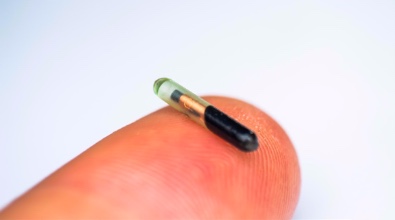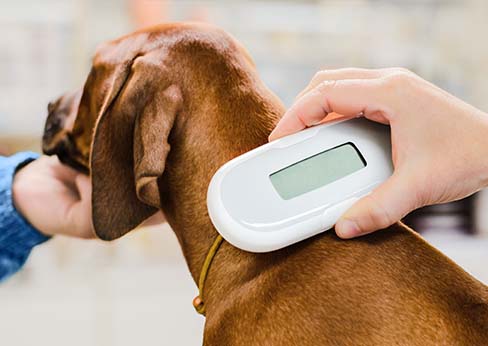
As much as pets are a part of our family, they sometimes let their adventurous minds get the best of them and wander off a little too far from home. As an owner who searched for a lost animal before knows, this is a heart-wrenching task filled with anxiety and stress.
The Harrowing Facts
- Home Again estimates that 1 in 3 pets will get lost during their lifetime.
- The American Humane Association estimates over ten million dogs and cats are lost or stolen in the United States every year.
- Only about 22 % of lost dogs that enter animal shelters are reunited with their families.
- Less than 2 % of lost cats that enter animal shelters are reunited with their families.
Part of being a responsible pet owner is having contingency plans if our pets leave home. If/when this happens, stay calm and follow the steps below.
What Should You Do When A Pet Is Missing?
- Check locally. Often times, pets don’t go off too far. Contact your local shelter and animal control agencies. Search the neighborhood. Ask your friends and neighbors if they’ve seen your furry friend, and ask that they be on the lookout.
- Contact the microchip company and update your pet’s information. You want the microchip company to know that your pet is lost or missing. That way, shelters or vets will know that you are searching for your lost pet. (More on this below)
- Check with local vets. Just like you would with animal shelters, ask if anyone has brought in a missing animal.
- Get the word out. Advertise on social media (Facebook, Instagram, etc.), pet stores, and veterinary hospitals. More awareness means a greater chance of finding your pet.
- DO NOT GIVE UP. This can be a very scary time for you and your family. Do not give up on your search. Miracles happen all the time.
At the end of the day, we cannot guarantee that our pets will stay by our side at all times. Even if your pet is well-trained or primarily stays inside the house, things happen. Fortunately, microchips significantly increase the chances of bringing your pet home.
What Is a Microchip?
A microchip is a small electronic chip the size of a grain of rice that identifies a pet with its owner’s information. Unlike collars, these microchips cannot fall off nor break, which means that they are a reliable safeguard for reuniting your feline or canine friend if they wander off. If your pet finds itself lost, a vet or shelter can scan the microchip for your pet’s information, which increases the chances of a reunion with its owner.

Facts/Questions About Microchipping Your Pet
Does it hurt? Nope – no more than a typical injection! In fact, a microchip can be implanted in your pet’s skin during any routine office visit. No surgery or anesthesia is required.
Is it expensive to install a microchip in my pet? Nope – a microchip is relatively inexpensive. Expect to pay around $50 to microchip your pet at their next vet appointment.
- Does it work? The American Veterinary Medical Association reports that 52.2% of microchipped lost dogs get reunited with their owners, while only 21.9 % of non-microchipped dogs do. The association also notes that more dogs would be reunited with their owners if their microchips had the correct information, which leads to the final point.
- Do I need to do anything after my pet is microchipped? Yes – you need to register your pet’s microchip online and keep it updated with current information for both you and your pet. A good time to do this is during your pet’s annual checkup where you could also see if the chip has moved location.
Conclusion
At Wag Enabled, we hope that your pets stay with their families safe and sound. But if they do go wandering, it is always better to be prepared. A microchip is not a GPS unit, but with updated information, it will significantly increase the odds that they will be reunited with their owner. And if your cat or dog does wander off, remember to stay calm, start local, use social media for outreach, and never give up. With the right steps and a bit of luck, they will be comfortably asleep in their beds ready for the next day’s adventure.





